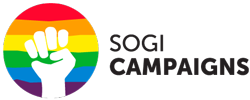Changing hearts and minds? Sure, but what exactly do we want to change?
Campaigns often aim to change “hearts and minds”. But these vague notions offer little help in identifying and designing what the change objectives exactly are.
So what exactly are we trying to change? How people think? what they do? what they consider right or wrong? what they believe others think?
Every campaigner needs to have a clear vision of the various levels and areas that we can aim for, knowing of course all of these are intimately intertwined.
In this post we’ll have a look at some notions:
Attitudes are evaluations of objects as good or bad, desirable or undesirable. Attitudes can evaluate people, behaviors, events, or any object, whether specific (ice cream) or abstract (progress). They vary on a positive/negative scale.
Beliefs are ideas about how true it is that things are related in particular ways. Beliefs vary in how certain we are that they are true. Unlike values, beliefs refer to the subjective probability that a relationship it true, not to the importance of goals as a guiding principles in life.
Norms are standards or rules that tell members of a group or society how they should behave. More generally, because norms are social expectations, we are more or less inclined to accept them depending on how important conformity vs. self-direction values are to us.
Traits are tendencies to show consistent patterns of thought, feelings, and actions across time and situations. Traits vary in the frequency and intensity with which people exhibit them. They describe what people are like rather than what people consider important.
Behaviors are sheer facts about what people do.
Confusions about these different categories, specifically between behaviors and attitudes, lead many campaigns in wrong directions as they focus on what people say rather than observe how people act.
With inputs from The Online Readings in Psychology and Culture



/cdn0.vox-cdn.com/uploads/chorus_asset/file/6846941/TanyaPatrisse.0.jpg)
/cdn0.vox-cdn.com/uploads/chorus_asset/file/6846953/redress.0.jpg)
/cdn0.vox-cdn.com/uploads/chorus_asset/file/6847013/message.0.jpg)
/cdn0.vox-cdn.com/uploads/chorus_asset/file/6846955/eclectic.0.jpg)
/cdn0.vox-cdn.com/uploads/chorus_asset/file/6847055/dashboy.0.jpg)





